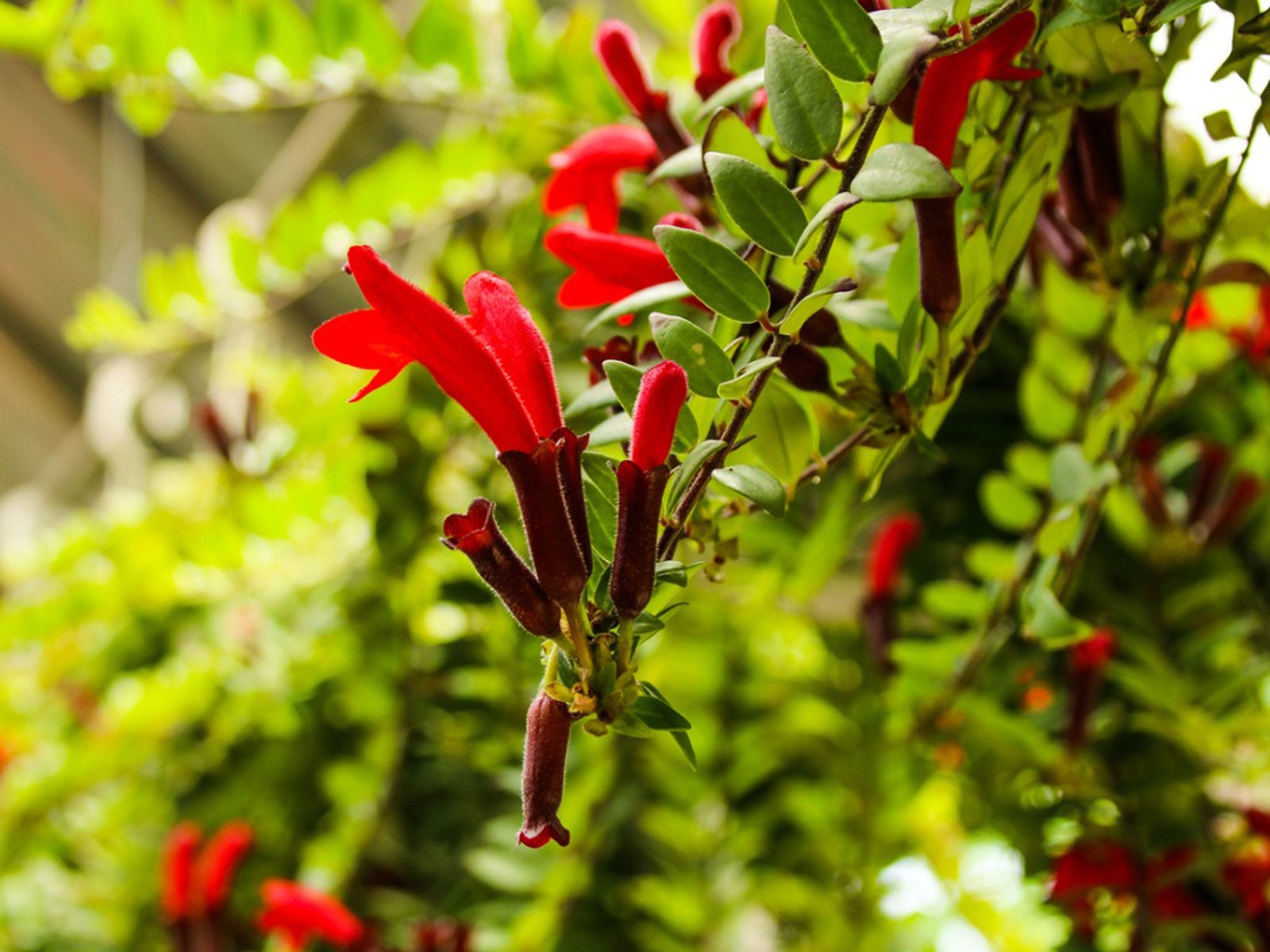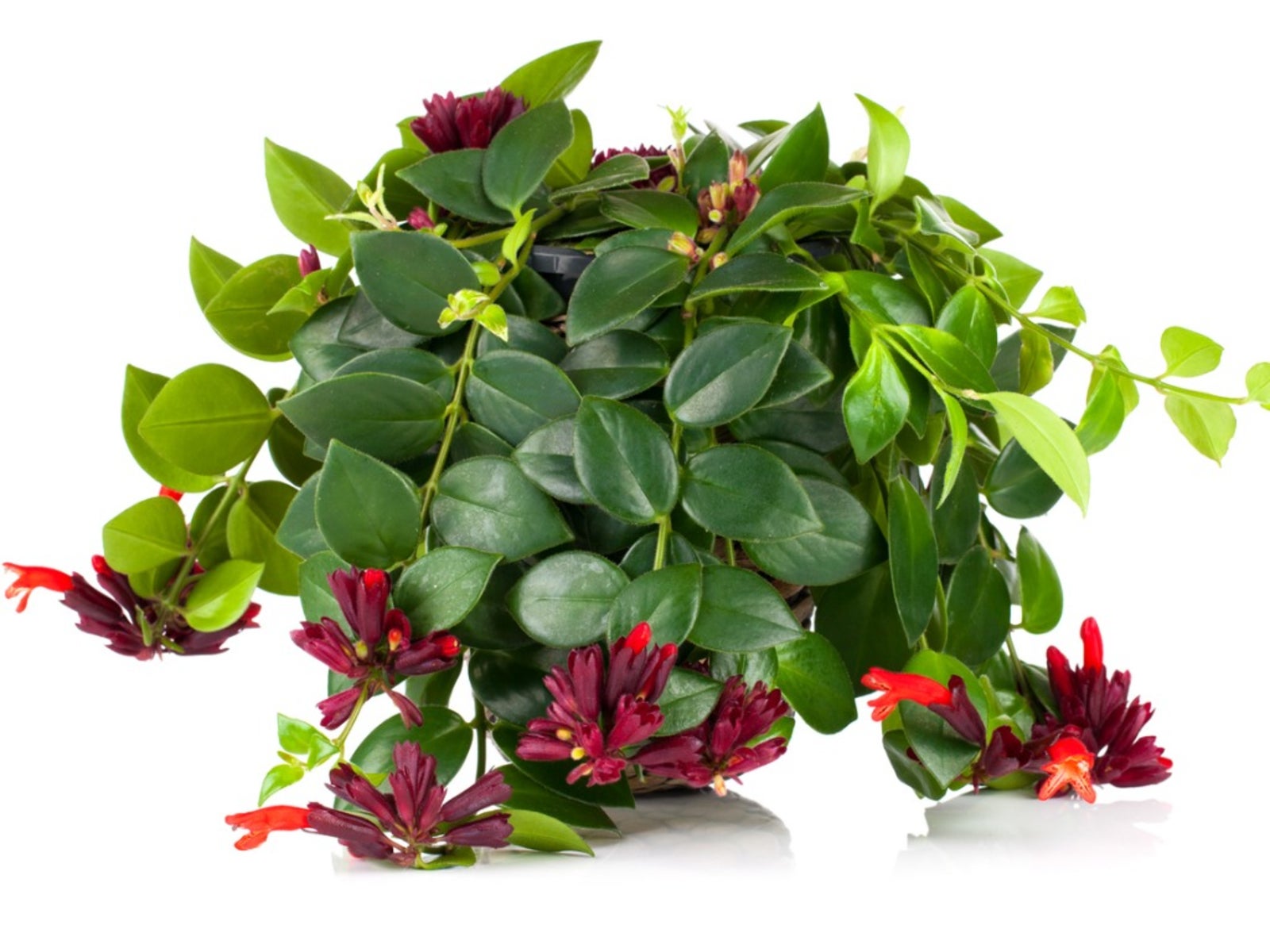Lipstick Plant Care - Tips For Growing Lipstick Plants

Nothing brightens up a room like a flowering plant. The Aeschynanthus lipstick vine has pointy, waxy leaves and blooms with bright clusters of flowers. Vivid red blossoms emerge from a dark maroon bud reminiscent of a tube of lipstick. Growing lipstick plants is not difficult, and with proper care, you get rewarded with continuous flowers.
Lipstick Plant Care
You do not have to know a lot about how to care for a lipstick plant (Aeschynanthus radicans) before you take on the task. Soil and nutrients, water, light, and temperature all affect your growing success. If you stick to these guidelines, you can be growing lipstick plants before you know it.
Soil and Nutrients
Lipstick plant care begins with airy soil and proper fertilization. A 3-2-1 NPK ratio liquid fertilizer gives a good result as long as you keep the soil moist. Be sure that you add a small amount of vitamins to the potting soil as part of the fertilization program.
Water
Too much water is disastrous for growing lipstick plants. You should water the plants moderately and be sure not to soak the soil or you risk root rot and fungal problems.
Light
The Aeschynanthus lipstick vine will not bloom without adequate light. Avoid placing this plant in full shade or full sun. The plant needs bright light for a portion of the day, but not all day long.
Temperature
Air and soil temperatures must be a minimum of 70 to 80 F. (21-27 C.) for proper blooming. You will get some blooming at 65 F. (18 C.), but it will be limited. At 50 F. (10 C.), you risk chilling, which is an injury that results in dark red leaves.
Tips for Growing Lipstick Plants
If you decide to try your hand at growing lipstick plants for a gardening project, here are some hints to help you along the way:
Gardening tips, videos, info and more delivered right to your inbox!
Sign up for the Gardening Know How newsletter today and receive a free copy of our e-book "How to Grow Delicious Tomatoes".
- A hanging basket is a good pot for the cascading Aeschynanthus lipstick vine. You can also grow the vine on slabs of wood, but if you do, be sure to keep the plant adequately moist.
- You can repot this plant from a few cuttings if you fertilize the plant and water it moderately. Be sure to place it in a spot that gets good light.
- If you start growing lipstick plants from cuttings, the optimal temperature is 70 F. (21 C.) for best blossoming. In the spring, the plant can handle a higher level of light.
- Because it originates in the tropics, the plant likes high humidity.
- If you would like other varieties, such as semi-trailing, upright, or climbing, the lipstick plant has many species to suit your whimsy.
- If the leaves turn yellow and begin to fall from the plant, it probably needs more water, light, or both.
- If the leaves or leaf edges become brown, chances are that you have it in a spot that has too much sunlight or it's receiving too little water.
- If you see a reddish-brown mass having the consistency of a spider web, treat the plant with a fungicide.
- A good organic pesticide, like neem oil, can handle the plant's usual pests. Ask your local garden center for advice on how to treat specific pests.
-
 Looking For Plants To Give You The Soft And Fuzzies? Try These 5 Fuzzy Leaf Plant Options
Looking For Plants To Give You The Soft And Fuzzies? Try These 5 Fuzzy Leaf Plant OptionsLovers of texture, drama, silver foliage and tactile plants will adore these special sensory garden additions. These fuzzy leaf plant options will leave you all aglow
By Susan Albert
-
 Get Ready For A Summer Of Hummers! Grow These Full Sun Hummingbird Plants and Flowers
Get Ready For A Summer Of Hummers! Grow These Full Sun Hummingbird Plants and FlowersIf you’re lucky enough to enjoy a sunny backyard, make sure you are maxing out on your pollinator opportunities and grow these full sun hummingbird plants and flowers
By Tonya Barnett
